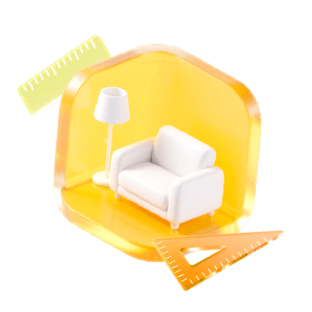Creating the ideal furniture arrangement in your environment is essential for enhancing both functionality and aesthetic appeal. Whether you're dealing with a compact apartment or a generous home, mastering the art of drawing a furniture layout significantly aids in visualizing your setup and making well-informed design choices. This guide is designed to walk you through the process, ensuring your area is not just visually stunning but also highly practical. Incorporating tools like Homestyler can streamline this process and bring your vision to life.
Understanding Your Space
Before you begin designing, it's vital to thoroughly comprehend the dimensions and characteristics of your area. Measure the height and width of each space, taking note of architectural elements such as doors, windows, and built-in furniture. This foundational knowledge will serve as a clear framework for your layout.
Gathering Tools for Layout Design
1. **Graph Paper:** This classic technique allows you to make a scaled representation of your room, with each square denoting specific measurements to help you visualize the layout.
2. **Design Software:** Take advantage of online tools or applications that enable you to craft 2D and 3D room layouts. Platforms like Homestyler offer convenient drag-and-drop features for seamless furniture positioning.
3. **Tape Measure and Ruler:** Accurate measurements are critical. Use these tools to ensure your furniture and room dimensions are precise.
Creating the Furniture Layout
1. **Begin with a Floor Plan:** Outline your room on paper or within your design software, including all measurements, doors, and windows to create a detailed blueprint.
2. **Select a Focal Point:** Identify a central feature in the room that you wish to highlight, such as a fireplace, television, or a decorative artwork. Arrange your furniture around this focal feature to create a harmonious atmosphere.
3. **Placement of Key Pieces:** Start by positioning large furniture items like couches and beds, ensuring they are set up for comfortable movement and access.
4. **Incorporate Secondary Furniture:** After placing the main items, introduce smaller elements like chairs, side tables, and shelving units, always considering functionality and physical balance in your layout.
5. **Evaluate Flow and Accessibility:** Confirm there’s sufficient space for movement between the furniture. A good practice is to allow a minimum of 2-3 feet for walking paths to enhance comfort.
Final Touches and Adjustments
Once you've arranged all the furniture, take a step back to review the layout. Modify as needed to achieve a balanced and functional design. Feel free to experiment with various configurations until you find the setup that resonates with you and fits your needs.
FAQ
Q: How can I best arrange furniture in a small living room? A: Opt for multi-functional pieces, such as storage ottomans, and organize seating to foster conversation while optimizing space.
Q: What steps can I take to ensure my furniture layout is practical? A: Emphasize fluidity in movement and accessibility by allowing generous walking space and ensuring key items are easily reachable.
Welcome to the No.1 Home Remodel Software
























![[For dear Adelina madee 🤎]](https://hs-designs.homestyler.com/production/design/images/8a07e535-9cbc-4132-a42a-5932dac3a112/1706972286037.jpg?x-oss-process=image/resize,w_502,m_mfit/format,webp)


































